North Sikkim with Gurudongmar Lake and Yumthang Valley is one of the most scenic places in India. Due to proximity to the international border, limited accessibility and high altitude, North Sikkim was not a very frequently visited place until recently when tourists are keener to travel this region. Yet, most places in North Sikkim are only allowed for Indian citizens who need an internal permit before going there. In this article, I have tried to cover all the necessary information for a perfect trip to North Sikkim.
Pin this image to save the link and read the post later!!
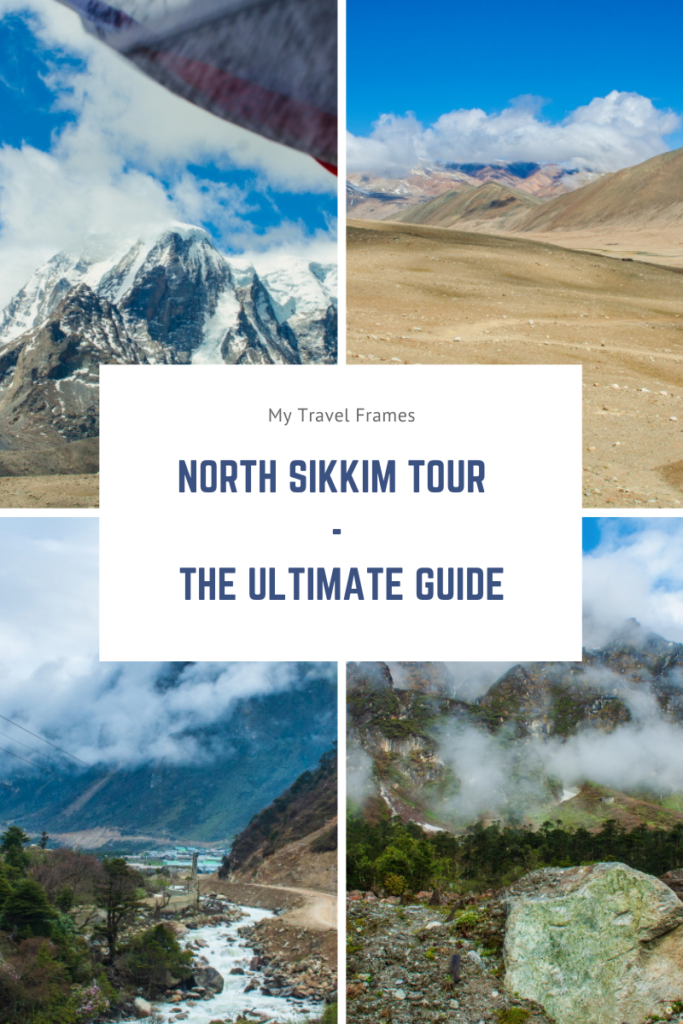
Table of Contents
About North Sikkim
Sikkim is a Himalayan state in northeast India. It is the least populous and 2nd smallest state in India. It is home to Kangchenjunga, the highest peak in India and 3rd highest peak in the world. The mesmerising natural beauty of this state attracts tourists from all over the world.
North Sikkim is the largest of all the four districts in Sikkim. It is bordered on the north and east sides by Tibet and on the west side by Nepal. The landscape is mountainous with dense vegetation up to the alpine altitude before thinning out to desert scrub towards the Northern Tundra. North Sikkim district has four subdivisions – Mangan, Dzongu, Kabi and Chungthang.
Do you want to download this North Sikkim Travel Guide as a PDF? Get it Now
The majority of the population of north Sikkim comprises Lepchas, Bhutias and Nepalis. Lepchas predominantly inhabits in Dzongu area and Bhutias in Kabu and Chungthang subdivisions. Whereas Nepalis predominate in the Mangan area. Bhutias and Lepchas are usually Buddhists, and Nepalis are Hindus.
With the diversity of magnificent mountain ranges, beautiful alpine lakes, scenic valleys, UNESCO world heritage national parks, most scenic trekking routes – the North Sikkim district is always an attractive place for travellers.
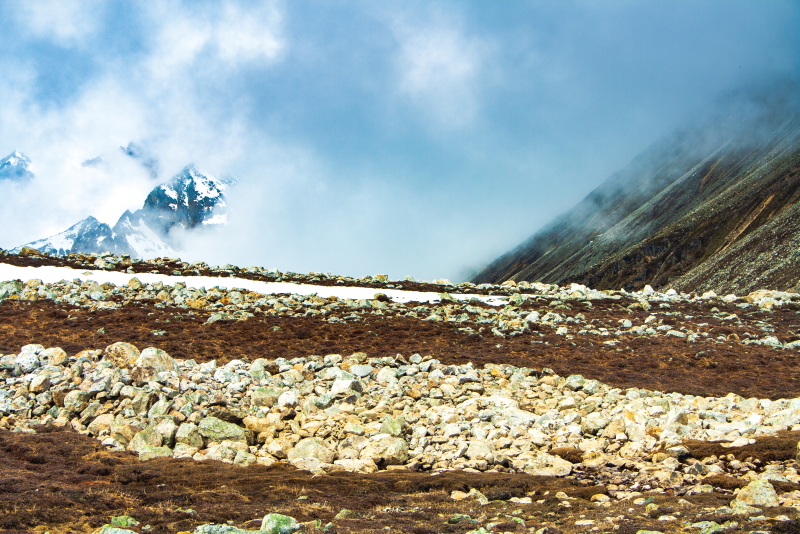
North Sikkim tourist spots
Places in North Sikkim that can be visited by tourists are –
- Gurudongmar Lake
- Yumthang Valley
- Zero Point (Yumesemdong)
- Chopta Valley View Point
- Thangu Valley
- Mount Katao
- Lachung
- Lachen
Gurudongmar Lake
(distance from Lachen – 70 km)
Gurudongmar Lake is the most beautiful places among all the tourist spots in North Sikkim. This lake is situated at an altitude of 17100 feet from sea level. It is a high alpine lake fed by glaciers and situated close to the India-China border.
Gurudongmar Lake is considered sacred by three different religions – Hinduism, Buddhism and Sikhism. Buddhists believe that Guru Padmasambhava visited this lake in the 8th century and that why the lake is named so.
Read more: A visit to Gurudongmar Lake in Sikkim, India
While Sikhs believed that Guru Nanak had visited it. Due to this belief, the Sikh Regiment of the Indian Army built a Gurudwara here, which was later handed to Namgyal Institute of Tibetology in respect to the belief of the local Sikkimese people that Guru Padmasambhava first visited the lake. The same building works as a monastery now and runs under the supervision of Lachen Monastery.

Yumthang Valley
(distance from Lachung – 21 km)
Yumthang Valley is a valley of rolling green meadows pierced by the Lachung river at the centre. This valley is also known as the valley of flowers as it is home to Shingba Rhododendron Sanctuary where many different species of Rhododendron trees are found. During spring, the whole valley gets covered with Rhododendron flowers surrounded by snow-capped Himalayan peaks. The altitude of Yumthang Valley is 11693 feet and it gets covered with snow in winter.
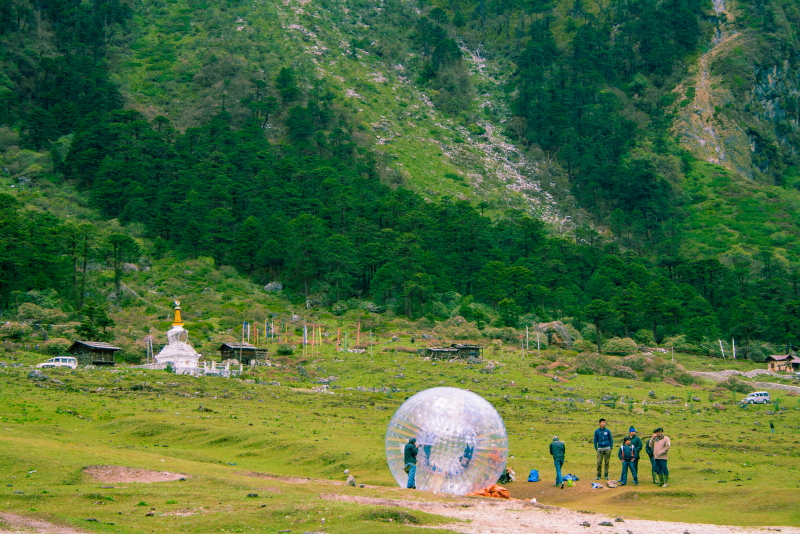
Zero Point (Yumesemdong)
(distance from Lachung – 45 km)
Yume Semdong or Zero Point is situated at an altitude of 15300 feet, and this place is 25 kilometres north of Yumthang Valley. This point is called Zero Point because there is no motorable road beyond this place, and tourists are not allowed to go beyond. One can visit the glaciers here throughout the year. The panoramic view of the place is beyond imagination, while the road to Zero Point is also quite adventurous.
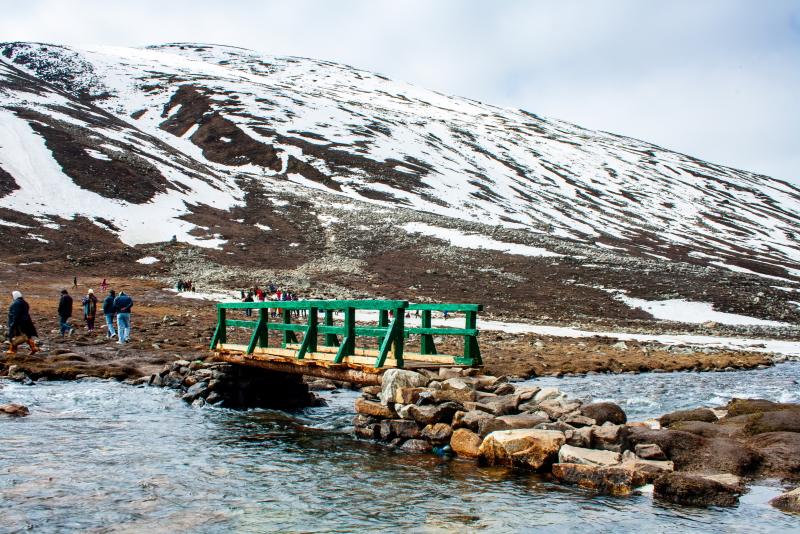
Chopta Valley View Point
(distance from Lachen – 40 km)
Please do not mix it with Chopta in Uttarakhand. Chopta Valley View Point is in Sikkim on an unnamed road from Thangu in North Sikkim. Chopta Valley is situated at an altitude of 13200 feet. Tourists go to see this valley during spring when the whole valley is covered with colourful flowers.
Kalapatthar is another place nearby where you can go on your way back from Gurudongmar Lake. It is just a snow point like Zero Point ahead of Yumthang Valley. You will get snow there throughout the year. This place is very close to the Nepal border.
Mount Katao
(distance from Lachung – 28 km)
Mount Katao is another scenic place near Lachung in North Sikkim. Tourists like to go there in non-winter months to enjoy the snow points and view of snowclad peaks around. The road to Mount Katao is also very scenic. There is a waterfall in midway. The valley remains covered with poppy, primula and rhododendron flowers in spring.
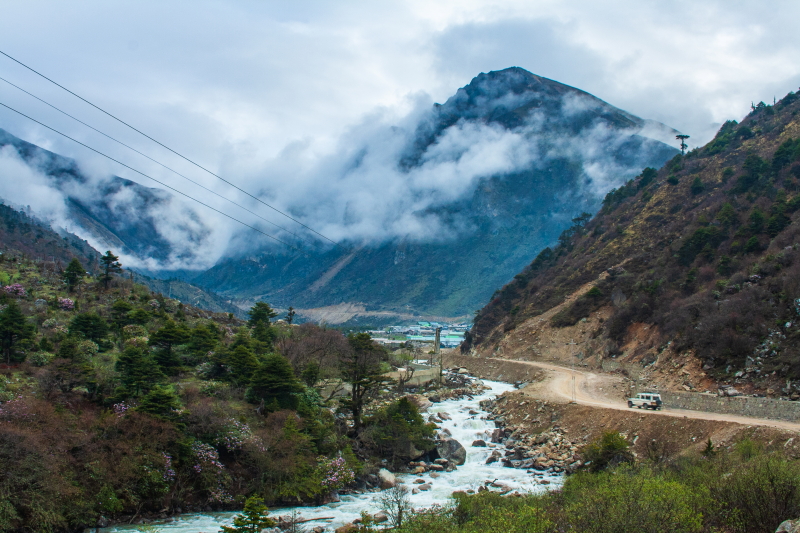
Thangu Valley
(distance from Lachen – 35 km)
Thangu Valley is on the way to Gurudongmar Lake. It is a large Indian Army base beside a river stream at 13000 feet. The usual breakfast halt on the way to Gurudongmar Lake occurs at Thangu. There are a few homestays as well for accommodating tourists, mainly bikers.
Lachung
(distance from Gangtok – 118 km)
Lachung is a small picturesque village in the North Sikkim district on the way to Yumthang Valley. Tourists have to stay here at night while going towards Yumthang Valley and Zero Point. You can visit the Lachung Monastery here, which is surrounded by apple orchards. Lachung is also the starting point of Green Lake Trek in Sikkim.
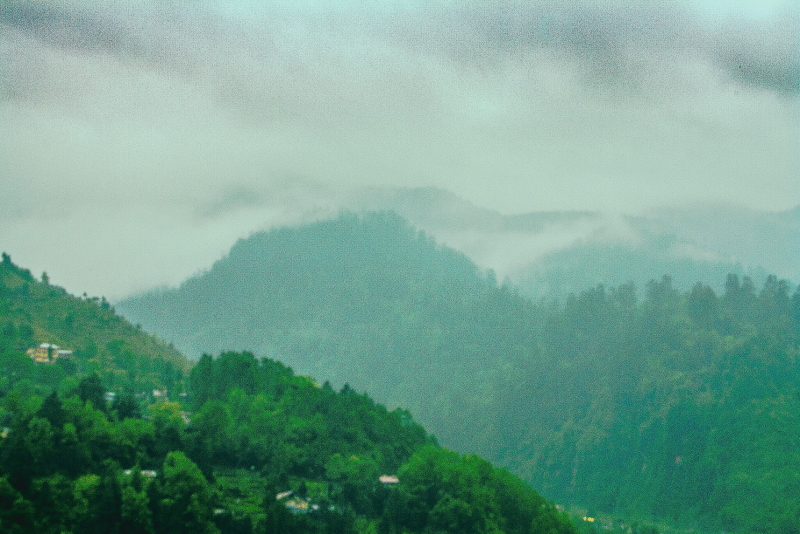
Lachen
(distance from Gangtok – 118 km)
Lachen is another small village on the way to Gurudongmar Lake. It is the usual night halt point for tourists who are going to visit Gurudongmar Lake. You can visit the small Lachen Monastery here.
North Sikkim tourist map
North Sikkim trip Itinerary
Any trip itinerary for North Sikkim starts from Gangtok. Standard North Sikkim tour itineraries offered by tour operators are usually of 2 nights and 3 days when you can cover both Gurudongmar Lake and Yumthang Valley.
Do you want to download this North Sikkim Travel Guide as a PDF? Get it Now
North Sikkim tour – 2N/3D itinerary
Gangtok – Chungthang – Lachen (1st N) – Thangu – Gurudongmar Lake – Chopta Valley – Lachen – Chungthang – Lachung (2nd N) – Yumthang Valley – Zero Point / Katao – Lachung – Chungthang – Gangtok
You can also reverse the route and stay at Lachung on the 1st day and on Lachen on the 2nd day.
The benefit of staying 2nd day in Lachung is that you can customise your tour as per the time left in hand. Zero Point and Katao both are en route from Lachung and the standard package does not include these two places.
You have to add them to your itinerary once you are in Lachung. You should talk to your driver, who will gather information about the road condition and required permit. Roads can be closed due to snowfall or landslides. You can also be denied to move ahead by the Army Check Post at any time. If the driver agrees to take you there, you have to pay the extra amount directly to him. Usually, if the roads are open, drivers take guests to these places with extra cash.
North Sikkim tour – 1N/2D itinerary
If you have a time constraint or you are not willing to visit Gurudongmar Lake (if you have members who are elderly or children or have any medical condition), then you can make the trip itinerary for 1 night 2 days.
You can also skip Yumthang valley and visit Gurudonmar Lake only in 1 night 2 days package.
Gangtok – Chungthang – Lachung (1st N) – Yumthang Valley – Zero Point / Katao – Lachung – Chungthang – Gangtok
or
Gangtok – Chungthang – Lachen (1st N) – Thangu – Gurudongmar Lake – Chopta Valley – Lachen – Chungthang – Gangtok
You can also customize this itinerary by adding one more day in Lachung. In that case, the package would be for 3 nights / 4 days. In the extra day in Lachung, you can cover both Zero Point and Katao and visit the Lachung Monastery and cottage industry.
Or you can stay in Dzongu/ Singhik/ Tingchim while returning to Gangtok. These are some offbeat places where tourists now prefer to spend a day in homestays. Even tour operators are offering packages including these places. Accordingly, your trip itinerary can be of 3N/4D or 4N/5D.
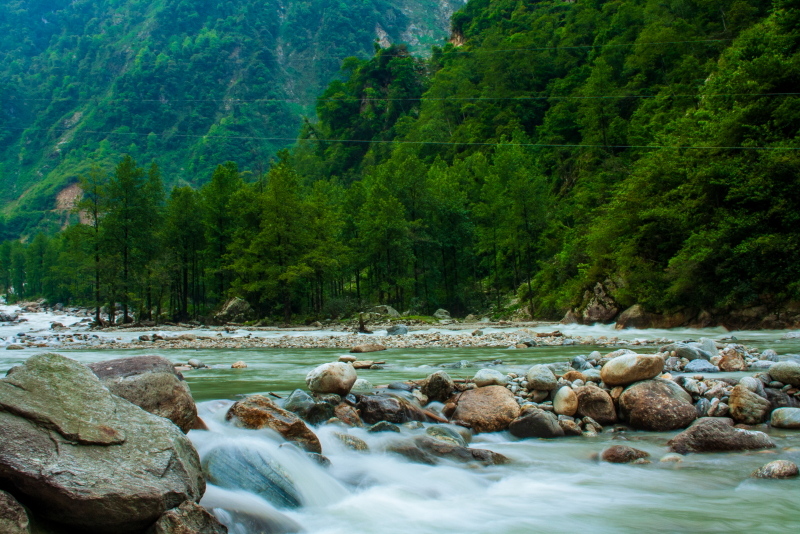
How to go North Sikkim
To reach North Sikkim, you need to reach Gangtok first, which is the capital of Sikkim. Gangtok can be reached by a hired cab from New Jalpaiguri station or Bagdogra airport. You can also avail a shared cab or a bus from the Sikkim National Transport bus terminus in Siliguri. The newest airport in Pakyong, 25 kilometres from Gangtok, is not well connected with other airports in India until now. So, it is better to take a flight to Bagdogra and hire a cab from there to reach Gangtok.
Read more: 14 Best Places to See in Gangtok, Sikkim
Any tourist place in the North Sikkim district can only be accessed by proper permission from Gangtok or Mangan permit office. As I have already mentioned, you can go there on your own two-wheeler with proper permission but not with a four-wheeler. You have to rent a car with a local driver from a Sikkim government authorised tour operator.
There are no local buses for transport in North Sikkim. You can get a shared cab, of course, from the local Taxi stand but in that case you have to collect the inner line permit yourself. Please read the next sections for more information.
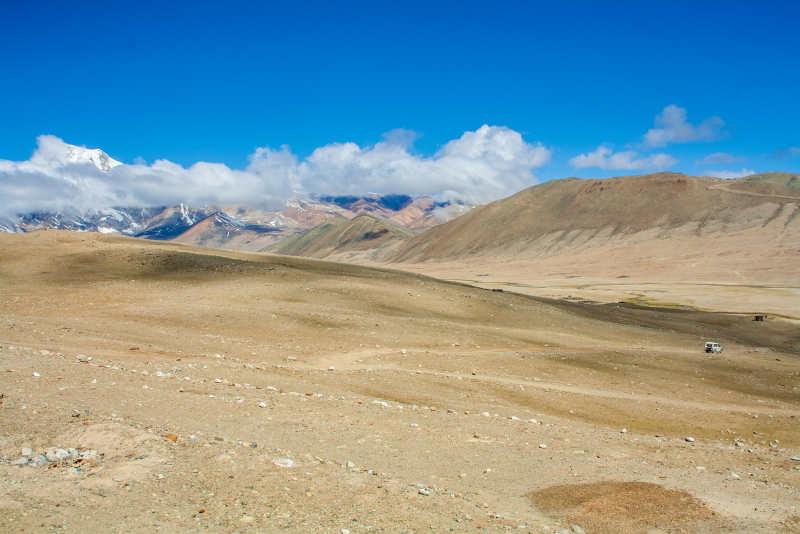
North Sikkim tour package cost
North Sikkim tour package cost includes transportation, meals (breakfast, lunch and dinner) and hotel accommodation.
This applies to 1N/2D and 2N/3D packages. For any other package, you can customise it after discussing it with your tour operator.
The package cost varies depending on your transport. You can opt for a shared cab or an exclusive vehicle depending on the number of persons.
Package cost may vary slightly (10% – 20%) with the season and type of vehicle.
1N/2D package cost
- Shared vehicle – ₹1500/per person
- Exclusive vehicle – ₹12000 – ₹15000
2N/3D package cost
- Shared vehicle – ₹3000/per person
- Exclusive vehicle – ₹25000 – ₹30000
Visit to the Zero Point (Yumsemdong) and Katao are not included in this package cost.
If you include these two places in your package, the cost increase and tour operators charge a hefty amount. Even after paying that amount, you may not visit those places depending upon climate conditions or you can be sent back from army check posts.
So the common practice is to talk to your driver about your plan only after you reach Lachung. Your driver can get an update of road and climate conditions from other drivers and locals and guide you accordingly.
Pay the extra amount directly to your driver. This amount varies from ₹2000-₹3000/car for each place, depending on your bargaining skill. If you are travelling in a shared cab, then the cost will be ₹300 per head per place.
If you intend to cover both the places, my suggestion would be to stay one more day in Lachung.
List of Sikkim Tourism Department approved travel agents
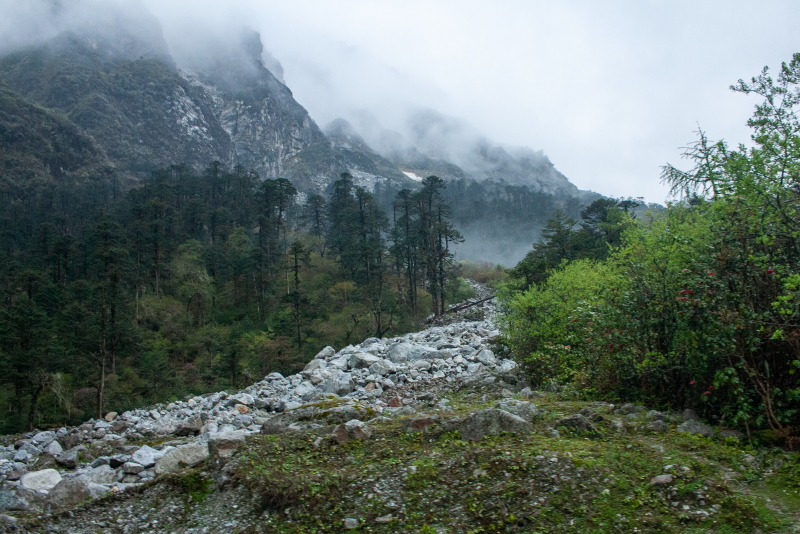
How to get a permit
Tourist places in the North Sikkim district mostly come under the provision of a restricted area. So every tourist needs an inner line permit or restricted area permit to visit these places.
Who does need an inner line permit?
Beyond Singhik, all areas in North Sikkim require a permit for tourists. Indian nationals can visit all the above-mentioned places with an inner line permit. For overseas citizens of India, a valid Indian visa is needed to visit all places. While foreigners can go to all places except Gurudongmar Lake.
How to make a permit?
Permits are only issued on the day of the journey. They are issued from Tourism Permit Office near M G Marg at the Sikkim Public Service Commission Building, Gangtok.
Usually, your tour operator arranges it for you. You have to carry the original and photocopy of your Voter Card or Passport with a colour photograph (passport size).
You can also make it yourself if you are self-driving.
There is no permit fee applicable.
Officially you can not self-drive a four-wheeler to north Sikkim, but you can ride a two-wheeler everywhere with a proper permit.
You may read trip reports of self four-wheel drive to North Sikkim. But remember, it’s a herculean task to get a permit for that. If you still want to try your luck, then you better visit the Mangan District Headquarter office for the permit.
The process of getting a permit for a self-driven bike is quite lengthy and may take more than a day. It’s better to contact a tour operator who will get it done for you at a nominal fee. You can drive your own two-wheeler or rent one from Gangtok against a security deposit.
Foreigners can only get a permit via a registered tour operator. They need to be in a group of at least two and more people.
You can check the permit information page on the Sikkim Tourism website here.

Best time to visit North Sikkim
The best time to visit north Sikkim is during spring or autumn. In spring, between March-May, you can see the flowers blooming. Yumthang Valley gets covered with colourful flowers from mid-April to the first week of May. While during the month of October to December, the visibility of Himalayan peaks is clearest. If you are lucky, you can get a surprise snowfall at the higher reaches in late December.
Read more: Pelling in Sikkim | The Natural Balcony for A Gorgeous View of Himalayas
From late December to mid-February, roads to the endpoints of North Sikkim tour like Gurudongmar Lake and Yumesemadong often blocked due to snow. However, you can enjoy the snow-covered villages of Lachen and Lachung in North Sikkim.
In monsoon, Sikkim encounter frequent landslides and roads to different parts of the state often get closed. So. it is better to avoid visiting North Sikkim in the rainy season.
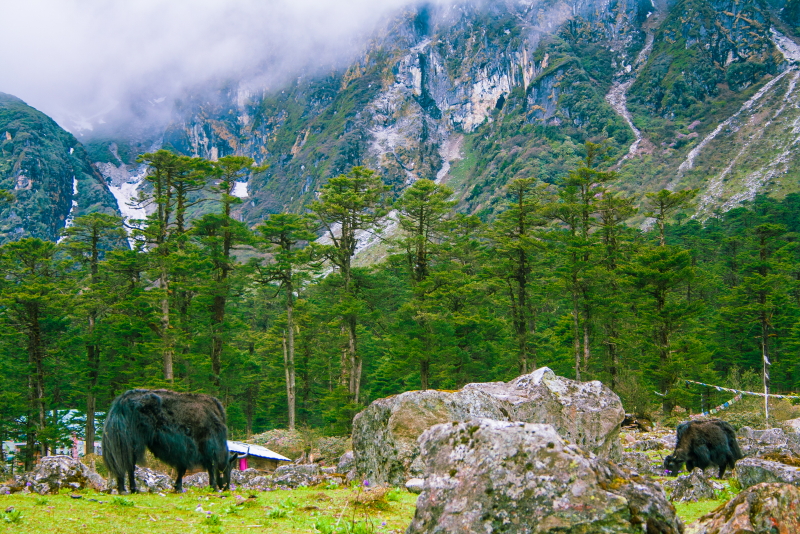
Where to stay
As you are travelling on a package tour to North Sikkim for visiting places like Gurudongmar Lake, Chopta Valley, Yumthang Valley, Zero Point and Katao, usually the accommodation is included in the package.
You have to stay either in Lachen or Lachung as per your itinerary. Both in Lachung and Lachen, you will get a budget and mid-range hotels and resorts as per your budget.
These hotels usually have all basic amenities (hot shower, electric blankets, room heater, tea/coffee maker, etc.), essential for staying at this altitude.
Bikers also like to stay in Thangu, which is 35 kilometres ahead of Lachen. The staying options in Thangu are basic homestays.
Hotels in Lachen / compare Tripadvisor rating
Hotels in Lachung / compare Tripadvisor rating
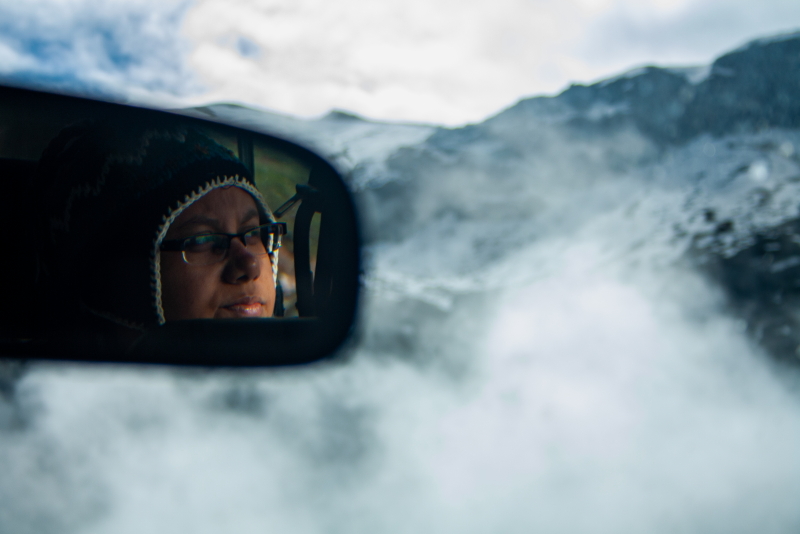
What to eat
The food is also included in your package. On the first day, during the journey towards Lachen/Lachung, lunch is provided in roadside eateries in Mangan. It is a veg/egg thali with average quality.
The subsequent meals are provided by your hotels in Lachen or Lachung and include an egg thali in lunch and a chicken thali at night for non-vegetarians. For vegetarians, the choices are small and usually consists of dal and a curry made of local vegetables.
You can get tea or coffee with veg pakoras in the evening and bread or Maggi at breakfast.
Of course, you can get momo (veg/non-veg) and Maggi at all stops during your journey. But do not expect a multicuisine restaurant anywhere on your route.
Do you want to download this North Sikkim Travel Guide as a PDF? Get it Now
What to buy
Well. I did not find any souvenir shop in North Sikkim. You can buy woollens caps or gloves made by locals. Usually, they sell it in their grocery shops or food stalls at Lachen, Lachung or Yumthang Valley at a reasonable price. You can also buy cottage cheese in Lachung.
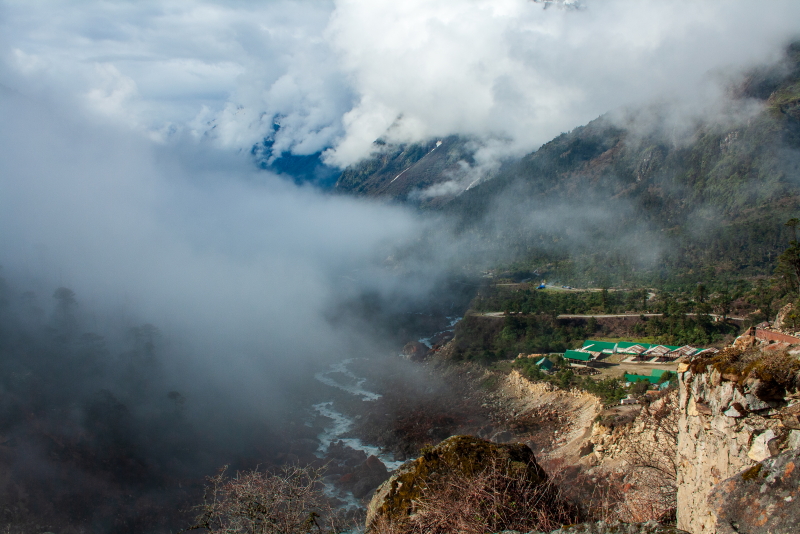
What to pack
The weather in north Sikkim is cold throughout the year; during summer, the temperature during the day can rise around 200C in Lachen or Lachung, but it falls to sub-zero at night in winter. You need light woollens in summer, while in winter, multiple layers of heavy woollens are a must.
- A sun hat, sunscreen and a pair of good quality sunglasses with UV ray protection
- Basic toiletries
- Regular clothing
- Thermal inner
- Full sleeve sweater
- Heavy jacket
- windcheater
- extra pair of socks
- woollen gloves
- woollen skull cap/muffler
- Walking shoes
- Necessary medicines(allergy pills, antiseptic, anti-nausea pills, bandages and other prescribed medications)
- Camera, spare batteries and mobile chargers
- Chocolates, candies and dry fruits
- ID cards
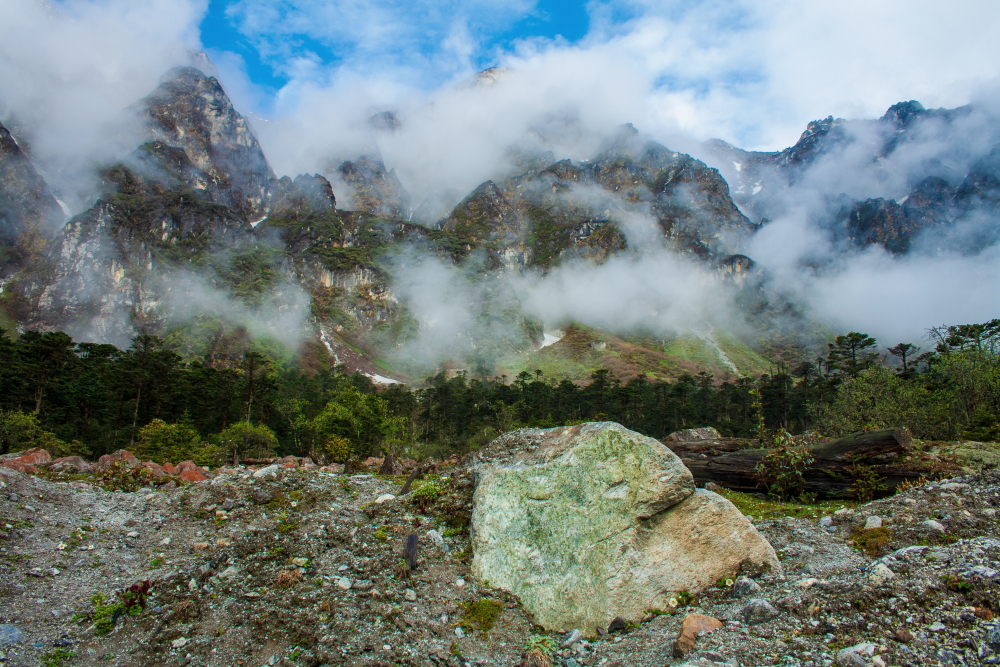
Precautions to take
As travelling to north Sikkim means visiting very high altitude places like Gurudongmar Lake and Zero Point, it is necessary to abide by precautionary measures that will help you to complete your trip safely.
- Carry enough layers of woollens if you are travelling in winter.
- Seek a doctor’s advice before you start your trip if you take the elderly or children with you.
- Do not drink or smoke at high altitudes,
- Drink enough water throughout the day.
- Sleep early and try to have a good sleep of 7-8 hours at night.
- Do not shout, run or hassle at very high altitude places.
- Communicate with every tour member regarding the symptoms of high altitude sickness and how to avoid it.
- Carry essential medicines and medications for high altitude sickness in your backpack.
- Do not hesitate to call off your tour at the first warning of seeking medical attention.
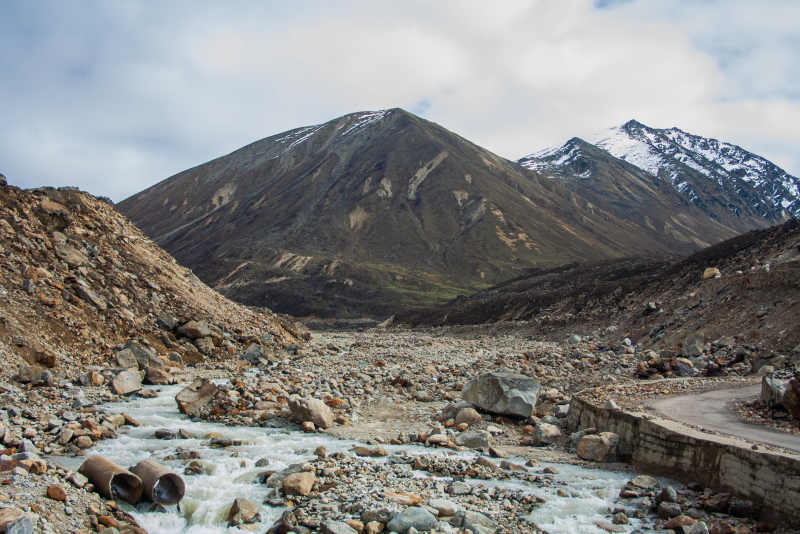
Health advisory on High Altitude Sickness
Gaurudongmar Lake is above 17000 feet, whereas ZeroPont and Katao are above 15000 feet. Anyone can suffer from high altitude sickness in these places. Remember, high altitude sickness can happen to nearly 50% of people at 4500 metres altitude.
High altitude sickness or Acute Mountain Sickness (AMS) occurs due to a lack of oxygen pressure in the air at high altitudes. It can be mild, moderate or severe.
Most travellers have a mild form of illness like mild headache or fatigue. Usually, they resolve with time, in 24-48 hours.
If symptom increases or showing symptoms of moderate illness, shifting to a lower altitude is needed.
Whereas, if symptoms of High Altitude Pulmonary Edema (HAPE) or High Altitude Cerebral Edema (HACE) appears, emergency medical treatment is needed, and the patient must be shifted below 4000 feet altitude immediately.
HAPE and HACE are severe forms of altitude sickness and are life-threatening conditions.
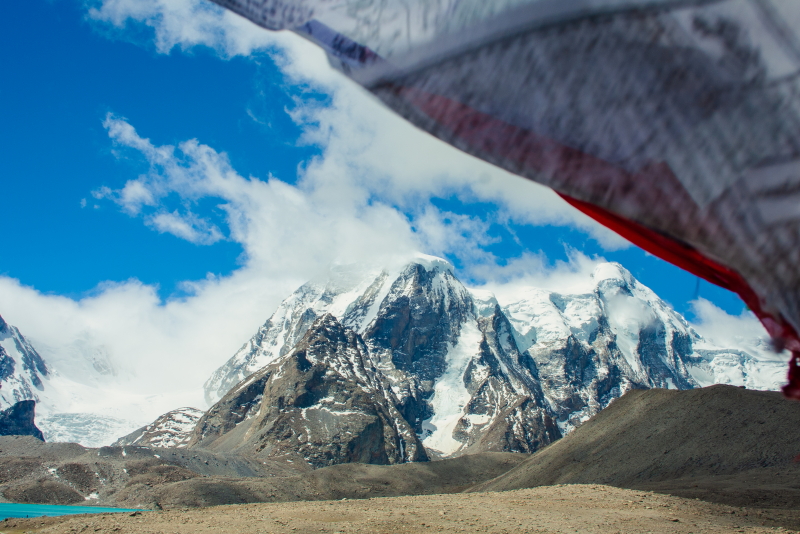
Medical aid
The nearest medical facility available for Gurudongmar Lake is at the Army Camps in Thangu, whereas for Zero Point, it is close to Yumthang Valley.
The tertiary level of treatment is only available at Gangtok, the capital of Sikkim.
Child friendliness
Children can suffer similarly from Acute Mountain Sickness. The incidence of high altitude sickness in children is at par with adults.
There is no clear guideline after which age group it is safe to travel to high altitude for a child.
But remember, treatment facilities for a child may not be available in a nearby Army Camp, and Acetazolamide is not recommended to use in children as a preventive medication for high altitude sickness.
So, it is always better not to travel at the altitude of Gurudongmar Lake or Zero Point with a young child. You should consult your paediatrician before planning a trip to North Sikkim with your child.
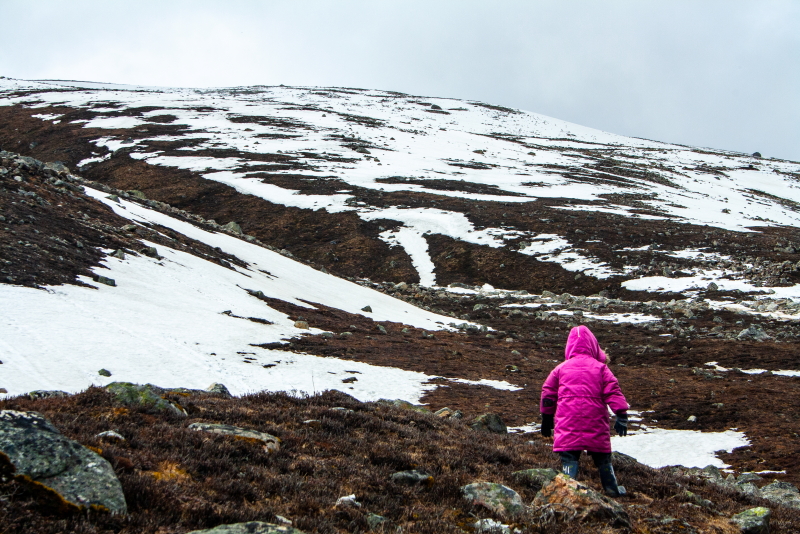
Quick tips
- North Sikkim tour is one of the most challenging trips you will experience in your lifetime. The altitude at which you will travel is going to affect you physically and mentally. You must be prepared for this challenge.
- You should book your packaged tour to North Sikkim from Gangtok to get the best rates. In high season (mid-May to mid-June and during Durgapuija vacation), it is better to book your trip beforehand,
- Try to communicate with every little detail with your trip organiser, starting from your car to your meals.
- Trip to Zero Point or Katao is not included in the package. You have to pay extra to the driver for that once you reach Lachung.
- You should carry packaged drinking water bottles and dry foods from Gangtok. The price of these things in Lachung or Lachen is almost three times the actual.
- Please do not underestimate the caution regarding acute mountain sickness; it’s so real in high altitudes. Listen to the warnings by locals and your driver.
- Carry enough woollens for high altitude areas and pack them separately in a bag that will be easily accessible.
- Do not forget to carry an original ID card with at least two photocopies and two passport-sized photos.
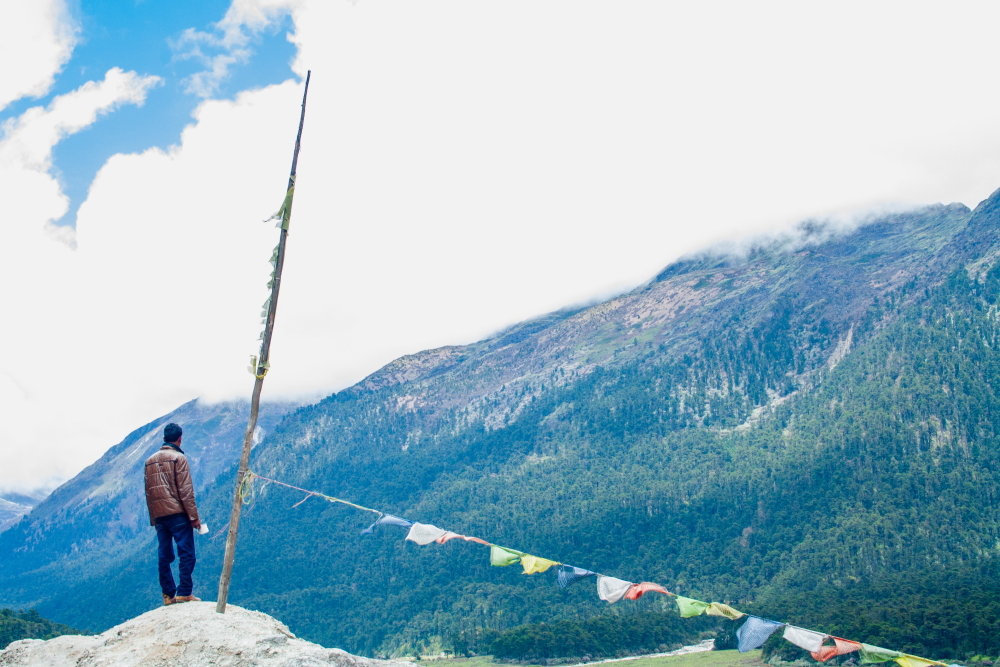
Frequently Asked Questions (FAQs)
How many days are enough for a North Sikkim Tour?
You need at least 4 nights 5 days for a tour to North Sikkim. On the first night, you have to stay at Gangtok and get your permit on next morning. The next 2 nights you will spend in Lachung and Lachen and complete your trip in North Sikkim. While you have to spend the fourth night at Gangtok again as it will be night already when you return from North Sikkim.
What is the best time to visit North Sikkim?
The best time to visit North Sikkim is during summer and autumn, while those are the peak season as well. You can visit in spring when the higher altitude valleys like Yumthang Valley and Chopta Valley gets covered with flowers. In winter, roads often blocked in snowfall, and you might not reach Gurudongmar Lake and Yumthang Valley during this time.
Does Gurudongmar Lake remain open throughout the year?
Yes, you can go to Gurudongmar Lake throughout the year except for the month of December and January when the roads get blocked by snowfall. Do not forget to carry heavy woollens if you are visiting Gurudongmar Lake between November to March.
Is North Sikkim a place for a romantic gateway?
Well, if you only consider the scenic beauty of the place as the prime consideration for your romantic gateway, then nothing can beat North Sikkim. But the journey to the north most places in North Sikkim like Gurudongmar Lake and Zero Point is very tiresome. The only place that can be a perfect place for couples is Lachung during the winter months. The whole village of Lachung gets covered with fresh snowfall. But of course, you could not visit Gurudongmar Lake or Yumthang Valley during this time.
Is North Sikkim open to foreign nationals?
Yes, foreign nationals will get a permit to visit all the above places in North Sikkim except Gurudongmar Lake. In fact, to visit any other place in Sikkim, including Gangtok, they need a Restricted Area Permit or Inner Line Permit. Foreigners can only get a permit via a registered tour operator. They need to be in a group of at least two and more people.
Book your trip: Resources
- Flight
Use Skyscanner or Google Flights to book your flight.
- Accommodation
Tripadvisor and Agoda are perfect for booking your hotel. If you want to stay in a hostel, then Hostelworld would greatly help you find one at your convenience.
- Travel Insurance
World Nomads is perfect for travel insurance. You can get comprehensive protection from them. Let them take care of unexpected situations while you concentrate on your trip.
- Package Tour and Activities
You can book a package tour from G-Adventures and Viator. They are a reputed company arranging small group tours and customising them per your requirements. You can also use Get Your Guide to book your private transport, city tours, heritage walks, food walks and other experiences like a cooking lesson or a Yoga session.
Disclosure: Some of the links below are affiliate links. You will be directed to another third-party website when you click those links. If you purchase anything via those links, I will earn a referral bonus without any extra cost to you.
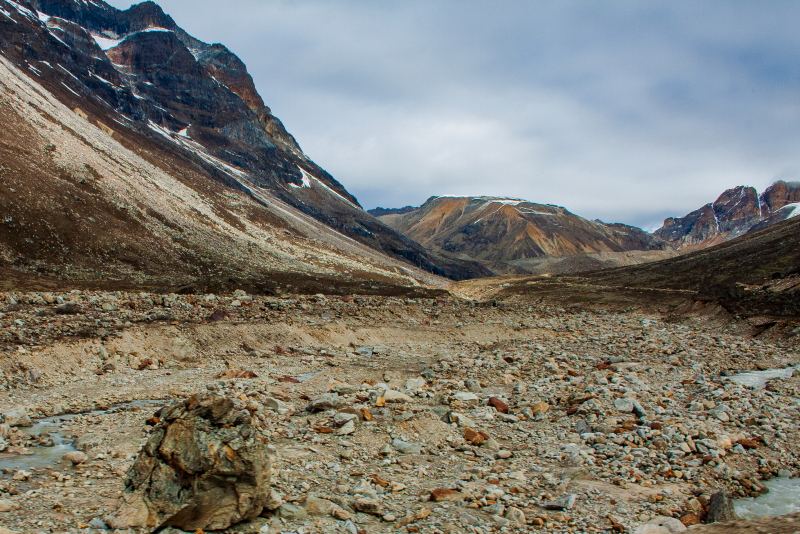
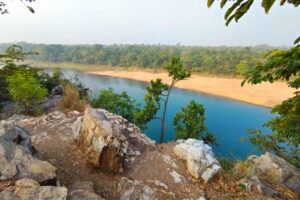
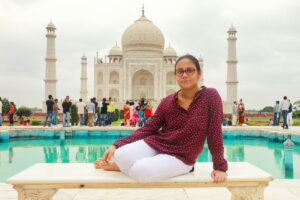
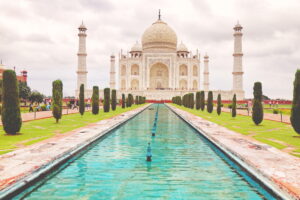
Can You suggest a trust worthy car rental company from where we can hire Innovas for our trip from Bagdogra to Gangtok-Lachen-Gurudongmar-Lachung-Yumtang Valley-Zero-Point-Gangtok-Natulapass etc.
We are planning a trip from June 11th to June 18th. We are 3 couples and we are all nearing 55+ to 65 age group. We are looking for a company which will not cheat and will give us good condition Innovas and good drivers. Thanks Murali Narayanan
I would suggest you to book a cab once you reach Gangtok (for North Sikkim and Nathula-Babamandir trip). In Sikkim the local cab operators rule. Best way to book a cab is to take the help of your hotel in Gangtok or book a cab from the travel agency offices in M G Road in Gangtok by going there physically. It often happen that if you book a cab in advance it might be changed at the last minute by the travel agent, especially during the peak season (June is the peak season in Sikkim). You can check the links below that may help you.
https://www.sikkimtourism.gov.in/Public/TravellerEssentials/travelagents
https://www.sikkimtourism.gov.in/Public/TaxiFare/TaxiFareChart
can we experience snowfall in the month of June ?
Nicely explained
Pingback: A visit to Gurudongmar Lake in Sikkim, India - My Travel Frames